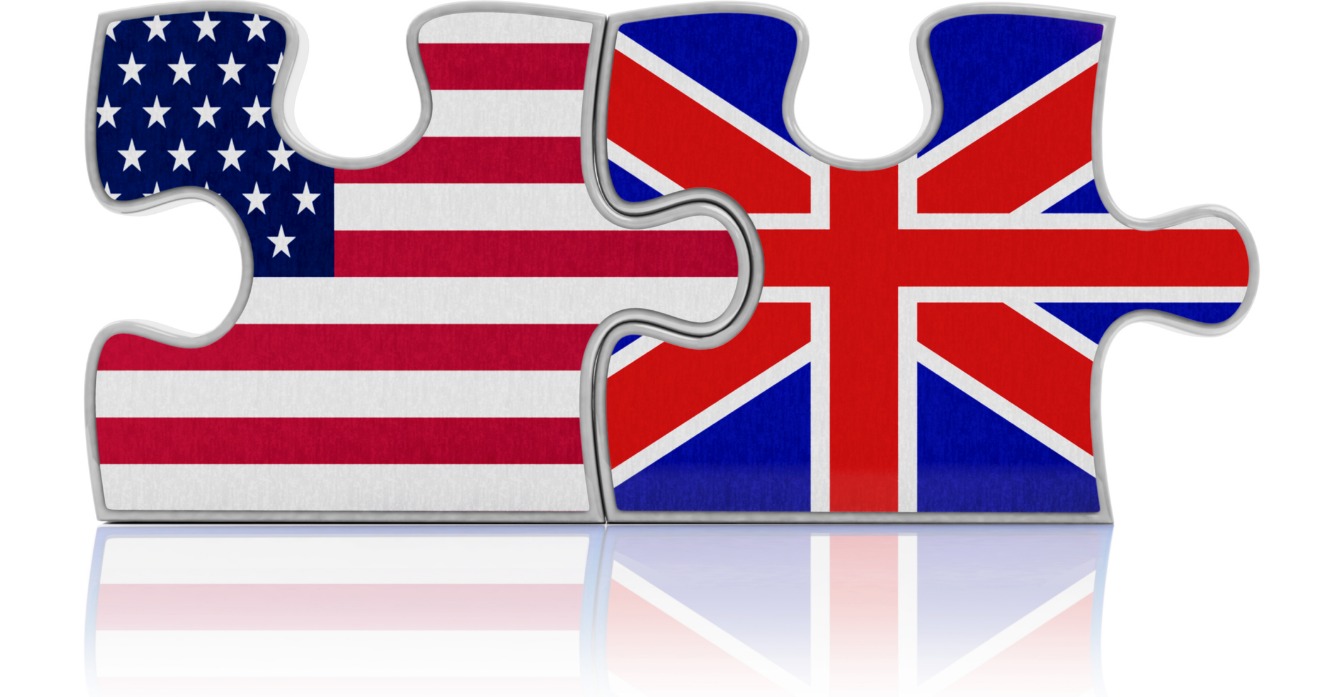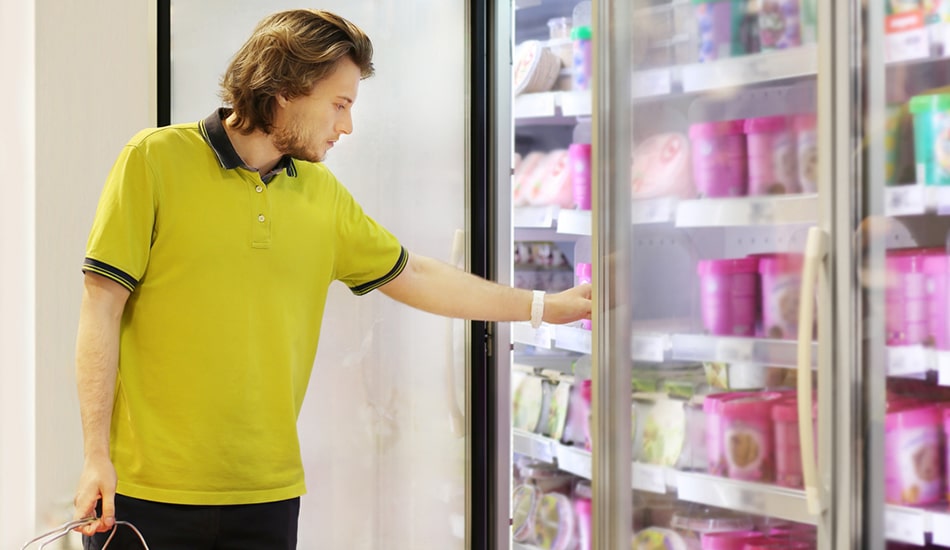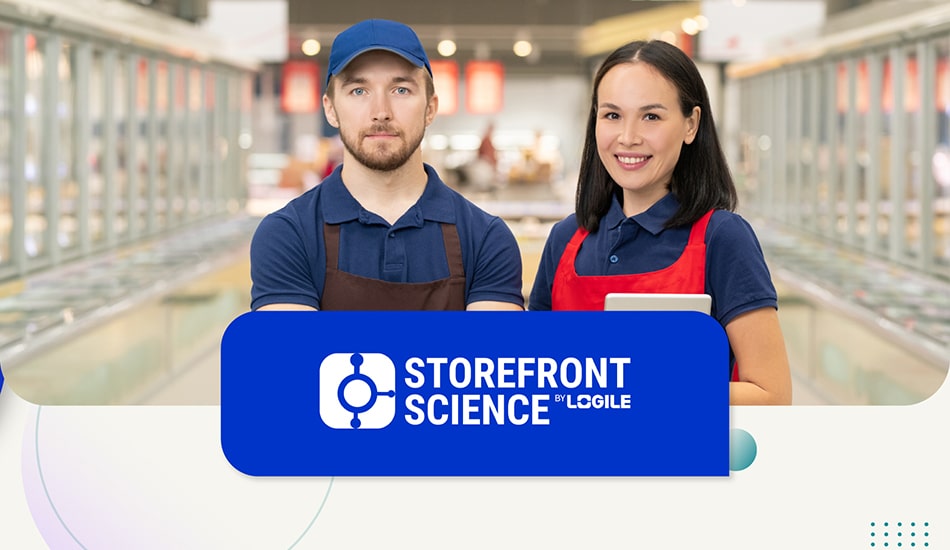Why retail should look abroad
It is self-evident that retailers should observe the tools and technologies used by their competitors at home. Not only is it easier for a retailer to analyze the impact of a new technology when they see customers in their market reacting to it, but if a retailer is looking to keep up with customer expectations, the first place to look is at what customers are already being offered by competitors. Going outside of their own markets for ideas, however, might not be as intuitive. Looking beyond what local retailers are doing can allow chains to tap into lucrative strategies generating success overseas. Looking back in history, overseas exchange of retail strategy has been integral to the development of the modern grocery store.
There has been a longstanding exchange of grocery retail strategy between the U.S. and UK with both sides of the pond borrowing solutions from abroad throughout the twentieth century. As early as 1948, budding UK grocers used visits to the U.S. to research cutting edge-retail strategies of the time.1 The U.S. self-service grocery model established by Piggly Wiggly in the early 1900s was observed and adopted by UK retailers, replacing the practice of associates shopping on behalf of customers with the modern concept of customers navigating stores and shopping for themselves.2 In the mid-1990s, UK retailer Tesco ventured into home shopping services via the computer, preceding U.S. internet-based grocers Webvan and Peapod, and other large grocers at the time. The efforts of the UK retailer pioneered the online grocery shopping offering that has since been taken up by many U.S. chains turning to options such as Instacart, Peapod or store-operated curbside pickup and home delivery. Numerous tools and technologies exchanged across the pond have been key to the evolution of grocery retail in both countries.
Why the UK is a good model
So why look to the UK? As identified, historically there has been a rich exchange of retail strategy between the U.S. and UK. Grocery retailers in each country have benefitted from implementing approaches of the other, suggesting that, when looking for new ideas, retailers should turn across the pond for inspiration. Beyond the historical basis, the current political and economic environment of the UK make it a key model for how to react to tightening consumer purse strings. Consumer spending has become increasingly more cautious as a result of the uncertainty surrounding Brexit and the effect it could have on the economy in Britain.3 Watching how UK retailers react in this pressured climate could benefit U.S. retailers as a learning opportunity.
To emphasize, the U.S. and the UK have two different retail climates, and their retailers generate different solutions to meet their customers’ needs. What works in one country may not work in another—as we can observe in the failure of UK chains to succeed in supplanting themselves in the U.S. market thus far. While there are differences in the consumer needs that retailers in each country must satisfy, there is opportunity to learn from what each has developed and identify ways to adapt desirable solutions to a home market.
The U.S. express store versus the UK express store
If there’s one thing that the U.S. can learn from UK retail, it would be the express store. The concept dates back to the early 2000s in the UK with the introduction of brands like Marks & Spencer Simply Food and Tesco Express. Being a much smaller country, space comes at a premium, fostering the development of a much different express store concept than the U.S., with an emphasis on:
- Shorter queuing times
- Leaner labor at a store level
- Convenience
- Location
- The on-the go customer
UK retailers have mastered the express store
Of course, there are express grocery stores in the U.S. offered by a variety of retailers. These stores, however, are very different in concept than what’s offered in the UK. At the most basic level, there are significant differences in how the U.S. and UK define express grocery stores. The U.S. express store offers a smaller selection of the same items as a regular grocery store, service counters included, to allow customers to perform a quick shop. In your typical U.S. express grocery offering, you could find anything from a made-to-order sub or hot foods counter to a produce section—and that’s the key difference when you compare it to a UK express store. Not only are the offerings at UK express stores premade and prepackaged, requiring less labor at the store level, but most of the products sold are ready-to-eat then and there. The UK express store features predominantly on-the-go or chilled-for-later meals and snacks, posing itself as a rival to lunchtime restaurant spots and other fast food options rather than a scaled-down, full-concept grocery store.4 In short, the U.S. views an express store as a pared-down grocery store, while the UK views an express store as a grab-and-go meal stop.
Why the difference?
It makes sense why such a difference has developed between the two countries. Space and public transport usage have driven the evolution of the grab-and-go express store in Britain. Consumers in the UK are less difficult to reach due to high concentration in town centers and public transport stations which receive high foot traffic throughout the day. In 2015, the UK had an average of 147 journeys per capita on public transportation, while the U.S. featured a much smaller average of 40 journeys per capita.5 While UK consumers are more accessible in some ways than U.S. consumers partly because of their usage of public transport, the UK doesn’t boast the extensive space for retail property that the U.S. does.
Consider that of the Tesco UK store fleet, the express format accounts for 65 percent of stores but only 10 percent of total store square footage of their UK stores—meaning these express stores are very small.6 Space is more expensive in high-traffic urban areas where UK express stores find their target customers—think Heathrow Airport, Paddington Station, or the London Underground as examples. Retailers use the expensive space to stock premade product rather than allotting a large portion of that limited area to preparation areas and made-to-order stations. These retailers are optimizing the customer-facing space to be quick and convenient for the customer, eliminating prep space in stores to be able to stock a larger variety of meal offerings that don’t require a wait.
The importance of location
Location is key to the success of a UK-style express store in the U.S. Of the U.S. supermarket giants that have ventured into express stores, many are in areas that receive low foot traffic where cars dominate transport and diminish the appeal of a quick grab-and-go store when compared to a one-stop-shop supermarket. In these areas—such as Boise, Idaho and Florence, Kentucky—the UK-style express store would not be set up for success. The appeal of a UK express store would be lost.7,8
Examining the attempts of UK retailer Tesco venture into the U.S. market with a UK-style express store concept sheds more light on the importance of location. The Fresh & Easy brand introduced in the Los Angeles area in 2007 lasted five years before the chain announced its plan to pull out of the U.S. market. One reason for the failure of the U.S. experiment for the chain was the inability to locate stores near the target audience and an unsuitable selection of pilot city.9 With automobiles dominating the transportation environment in Los Angeles, a store concept that thrives on foot traffic was not suitable.
Perhaps the U.S. venture most similar to what is offered by UK express stores is the recent development of AmazonGo. These stores, first opened in 2016 and known for their cashier-less, camera-driven checkout, offer ready-to-eat options for on-the-go customers—a spitting image of a UK express store.10 The initial stores have been placed in downtown in Seattle, Chicago and San Francisco—all areas where the foot traffic needed to support a grab-and-go style store is present.
In order for a UK-style express store to be successful, it requires the right combination of inputs—one of the most important being location. Dense urban areas are best suited for this type of store, and as demonstrated by the examples above, correct selection of location can make or break the outcome of this concept store.
Borrowing future strategic improvements
The up-and-coming cashier-less approach trialed in AmazonGo stores has spurred another one of these trans-Atlantic exchanges that retailers in both countries would be wise to pay attention to. The video surveillance technology tracks items picked up by a customer and charges them automatically for the items when they leave the store, eliminating the need to check customers out. This consequently eliminates much of the labor needed to staff the front end. Most recently, UK-based retailer Tesco has trialed a cashier-less technology similar to AmazonGo, gaining attention as one of the first established grocery retailers to do so. It seems other U.S. grocery retailers are following suit, with Sam’s Club and Giant Eagle beginning to explore the use of AI on their front end.11 It’s early days for this technology, but nevertheless an opportunity for retailers in both countries to observe its application moving forward.
Without the exchange of ideas between grocery retailers in the U.S. and UK, it’s hard to believe that either country would have made it as easily to the place they are now. From the self-service store and online shopping to the new opportunities of the on-the-go express store and cashier-less checkout, it seems that some truly groundbreaking retail approaches implemented in both countries were the result of looking a little further than the competitor next door. And next time retailers are in need of new strategies, hopefully they might consider looking across the Atlantic for fresh inspiration.
References
- “100 Years of Great Value.” Tesco PLC, https://www.tescoplc.com/about/100-years-of-great-value-1/
- Ross, Ashley. “The Surprising Way a Supermarket Changed the World.” Time, 9 Sept. 2016. https://time.com/4480303/supermarkets-history/
- “2019 Retail Predictions.” PWC, 2019. https://www.pwc.co.uk/industries/retail-consumer/insights/retail-outlook.html
- “M&S Simply Food.” St Pancras International. https://stpancras.com/shops-and-dining/dining/marks-and-spencer-simply-food
- “Urban Public Transport in the 21st Century.” UITP, 2015. https://www.uitp.org/sites/default/files/cck-focus-papers-files/UITP_Statistic%20Brief_national%20PT%20stats.pdf
- “Group Space Summary.” Tesco PLC Annual Report and Financial Statements 2018, 2018, pp. 148. https://www.tescoplc.com/media/474793/tesco_ar_2018.pdf
- Wells, Jeff. “Albertsons is testing a new ‘express’ convenience store.” Grocery Dive, 22 Dec. 2017. https://www.grocerydive.com/news/grocery–albertsons-is-testing-a-new-express-convenience-store/534380/
- Lucas, Amelia. “Walgreens expands grocery experiment with ‘Kroger Express’ shops inside test locations.” CNBC, 4 Dec. 2018. https://www.cnbc.com/2018/12/04/walgreens-kroger-expand-partnership-testing-express-grocery-shops.html
- Walker, Tim. “Why does Tesco work in the UK but not in the United States.” Independent, 8 Dec. 2012. https://www.independent.co.uk/news/business/analysis-and-features/why-does-tesco-work-in-the-uk-but-not-in-the-united-states-8393592.html
- Ciment, Shoshy. “We went to Amazon Go and saw why 7-Eleven should fear the e-commerce giant’s convenience store of the future.” Business Insider, 30 July 2019. https://www.businessinsider.com/amazon-go-or-7-eleven-better-convenience-store-2019-7#though-not-as-fully-stocked-as-7-eleven-amazon-go-had-a-nice-selection-of-snack-food-27
- Murawski, John. “Cashierless Store Make Inroads in U.S.” The Wall Street Journal, 12 Aug. 2019. https://www.wsj.com/articles/cashierless-stores-make-inroads-in-u-s-11565602204




